Few tools are as versatile and indispensable in the cooking world as the saucepan (or sauce pan). The saucepan plays a crucial role in the culinary world, from simmering sauces to boiling pasta and everything in between. But what exactly is a saucepan, and how does it differ from the other pots and pans in your kitchen?
In this blog post, we'll explore what a saucepan is, its use, and how to choose the right one for your cooking needs.
What Is A Saucepan?
A saucepan is a fundamental piece of cookware known for its versatility and practicality. Its history can be traced back to early civilizations when cooking vessels were crafted from clay or metal. Over time, saucepans have evolved, becoming a staple in modern kitchens.
In terms of appearance, a saucepan typically features a round or oval-shaped body with relatively high, straight sides. It has a long handle, a smaller helper handle, and a fitted lid to retain heat and moisture during cooking. Materials like stainless steel, aluminum, and copper are commonly used, each offering its advantages.
The pros of a saucepan are numerous. It's a versatile kitchen tool, suitable for tasks ranging from boiling and simmering to making sauces and reheating. Many saucepans have a heavy base or core, ensuring even heat distribution and reducing the risk of hot spots. They come in various sizes, catering to different cooking needs, and are designed for easy handling with their long and helper handles.
However, saucepans do have limitations. They may not be ideal for preparing large quantities of food, making them less suitable for large gatherings. Additionally, their high sides make them less suitable for tasks that require extensive stirring or flipping, such as frying.
Saucepan Uses
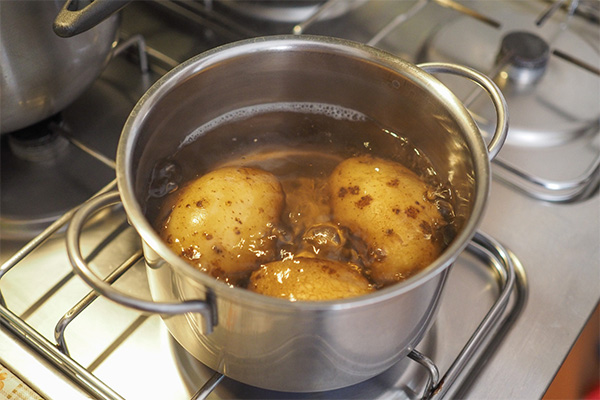
Heating Liquids: The primary purpose of a saucepan is to heat liquids for various cooking tasks.
Making Sauces: Saucepans are ideal for making sauces like béchamel, hollandaise, and gravy due to their even heat distribution. It is also great for reducing pasta sauce.
Cooking Pasta: Boiling water in a saucepan is essential for cooking pasta, grains, and noodles.
Blanching Vegetables: Blanch your vegetables briefly in boiling water to preserve their vibrant color and delightful texture.
Simmering Soups and Stews: A saucepan's low sides and controlled heat make it perfect for simmering soups, stews, and chili.
Poaching: Poach eggs, fish, or chicken.
Melting Ingredients: Use saucepans to melt butter, chocolate, or cheese without scorching.
Reheating: Quickly reheat leftovers or sauces.
Steaming: Steam vegetables or dumplings by placing a steamer insert.
Candying: Create sugar syrups to candy fruits or make caramel.
Boiling Eggs: Boil eggs to the desired level of doneness.
Cooking Grains: Simmer rice, quinoa, or oats until tender.
Making Custards: Create custards and puddings by applying gentle, controlled heat during cooking.
Mashed potatoes: Boil and mash the potatoes in a saucepan.
What To Consider When Shopping For A Saucepan
Types Of Material
Stainless Steel Saucepan
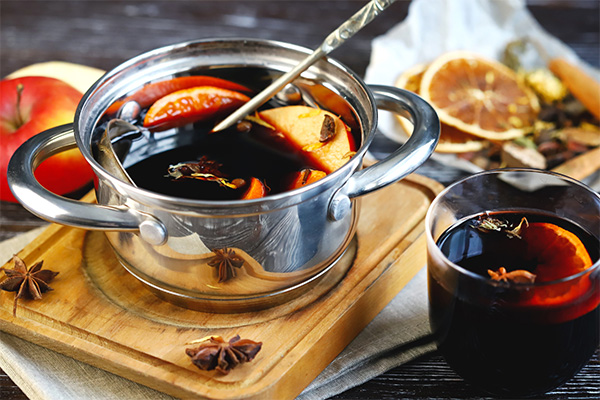
Known for its durability and resistance to staining, stainless steel saucepans are excellent for versatile cooking. Their durability is a significant advantage, as they resist scratches, dents, and rust and can endure high temperatures without chipping or cracking. A key feature of stainless steel is its non-reactive nature, making it safe for cooking acidic or alkaline foods without the risk of metallic tastes or discoloration.
Many stainless steel saucepans are designed with an aluminum or copper core or bottom, enhancing heat distribution and preventing hot spots. This versatility extends to their compatibility with various cooking methods and heat sources, including induction cooktops. Additionally, their sleek appearance adds a modern touch to kitchen decor.
However, there are some drawbacks to consider. Pure stainless steel is a poor heat conductor compared to copper or aluminum, potentially leading to uneven cooking if the saucepan lacks a bonded, conductive base.
Foods, especially proteins, are prone to stick to stainless steel surfaces and can make cleaning stainless steel cookware slightly more difficult. Stainless steel pans require more oil or butter to prevent this issue. Over time, the material can develop discoloration or water spots, demanding extra care in cleaning and maintenance. Moreover, high-quality stainless steel cookware can be more expensive than other options.
Nonstick Saucepan
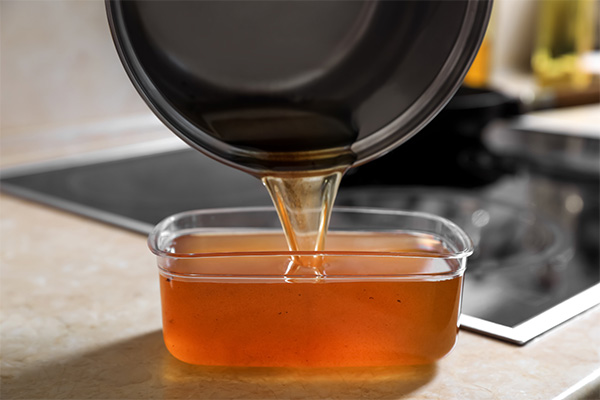
Nonstick saucepans are popular in many kitchens, favored for their convenience and ease of use. Compared to stainless steel, nonstick cookware is its exceptional ability to prevent food from sticking, making it ideal for cooking delicate items like eggs, pancakes, or fish without needing much oil or butter. This feature also simplifies cleaning, as food residues are easily wiped away. Additionally, nonstick saucepans are typically lightweight and easy to handle, which is beneficial for everyday cooking.
However, there are several drawbacks to consider. Nonstick coatings can degrade, especially when exposed to high heat or abrasive cleaning tools, leading to flaking or chipping. Using nonstick cookware carefully and avoiding metal utensils and harsh scouring pads is essential.
Another concern is the potential release of harmful chemicals from certain nonstick coatings when overheated, although newer nonstick technologies have significantly reduced these risks. Nonstick saucepans are generally unsuitable for high-heat cooking techniques like searing or broiling, as the high temperatures can damage the coating. Additionally, they are often not as durable as other types of cookware, such as stainless steel or cast iron, and may need to be replaced more frequently.
Copper Saucepan
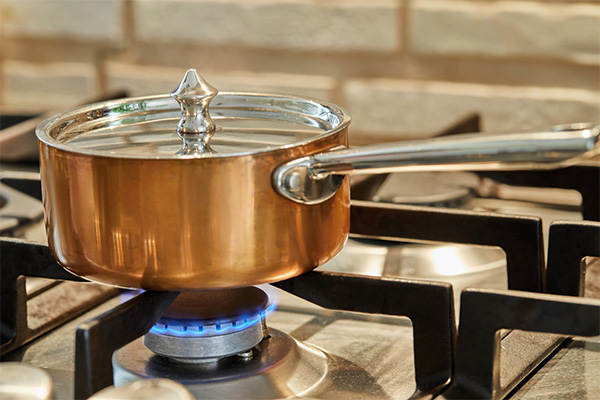
Copper saucepans are renowned for their excellent heat conductivity and precise temperature control, making them a favorite among professional chefs and cooking enthusiasts. Copper's superior heat distribution ensures even cooking, reducing the risk of hot spots that can cause burning or unevenly cooked food. This makes copper saucepans ideal for cooking tasks that require precise temperature control, such as simmering delicate sauces or melting chocolate. The material also responds quickly to changes in heat, giving cooks greater control over the cooking process.
However, copper saucepans have some disadvantages. Copper is a reactive metal that can react with acidic foods, leading to a metallic taste and potential health risks. To counter this, most copper cookware is lined with a non-reactive metal, such as stainless steel or tin. Over time, this lining can wear down, necessitating re-lining. Copper saucepans also require regular polishing to maintain their bright, shiny appearance, as they can tarnish when exposed to air. Furthermore, copper cookware is generally more expensive than other types of cookware, making it a significant investment.
Aluminum Saucepan
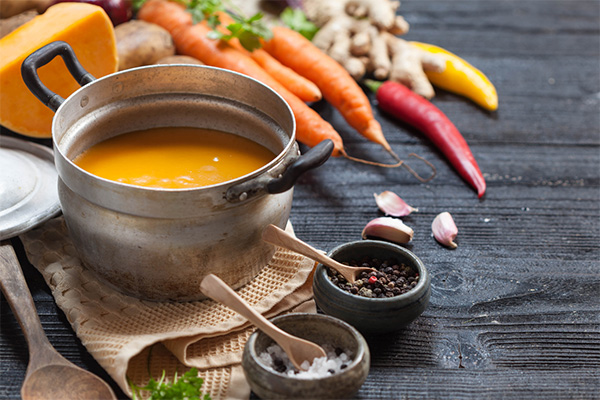
Aluminum saucepans are a common choice in many kitchens due to their affordability and good heat conductivity. Aluminum is an excellent conductor of heat, allowing for quick and even heating of food. This makes these saucepans suitable for various cooking tasks, including boiling, simmering, and sautéing. They are also lightweight, making them easy to handle, especially beneficial for larger pots filled with food.
However, there are notable drawbacks to aluminum cookware. Pure aluminum is a reactive metal and can leach into food, particularly when cooking acidic or alkaline ingredients, potentially altering the flavor and color of the dish and posing health concerns. To address this, many aluminum saucepans are anodized or coated with a non-reactive material like stainless steel or nonstick coatings, which can mitigate these issues. Additionally, aluminum saucepans can be less durable than other materials like stainless steel or cast iron, as they are prone to warping under high heat and can dent or scratch more easily.
Cast Iron Saucepan
Cast iron saucepans are prized for their durability and exceptional heat retention, making them valuable in many kitchens. One of the main advantages of cast iron is its ability to maintain and evenly distribute heat, which is ideal for slow cooking, braising, and frying. It can withstand very high temperatures, making it suitable for searing meats and achieving a well-developed crust. Cast iron saucepans are also versatile, as they can be used on the stovetop, in the oven, and even over open flames.
However, there are several cons to consider. Cast iron is relatively heavy, making handling and maneuvering the saucepan more challenging, especially when it's full. It also requires specific maintenance to prevent rust and preserve its non-stick properties. Seasoning the pan, a process of oiling and heating to create a natural, non-stick surface, is essential and needs to be maintained regularly. Cast iron is not the best conductor of heat, so it can take longer to heat up and may have hot spots. Additionally, cast iron can react with acidic foods, affecting your dish's flavor and potentially damaging the seasoning.
Size
Consider the capacity of the saucepan for your typical cooking needs. Smaller saucepans (around one quart) are suitable for reheating and making sauces like tomato sauce. In contrast, larger ones (three to four quarts) are better for boiling, simmering, or making larger quantities of food.
Price
Set a budget before shopping, as saucepan prices can vary widely. Premium materials and expert craftsmanship may come with a higher price tag, but they can be a valuable investment for long-lasting durability.
Alternatives To Saucepans
Different dishes require the distinct shape of different types of cookware. Saucepans are a popular cooking tool, but some other pots and pans can be used for cooking liquids and might fit your needs better!
Saute Pan
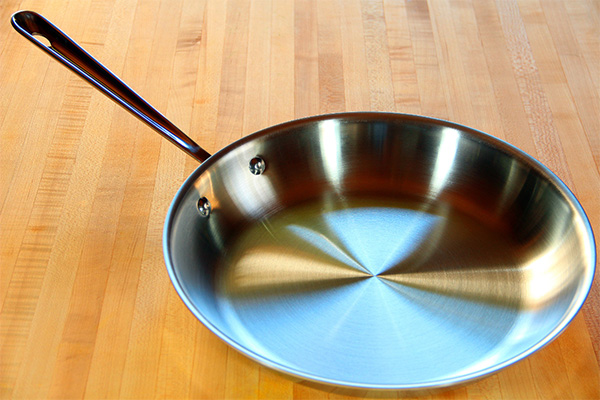
A sauté pan is a versatile piece of cookware with distinct design differences and intended uses compared to a saucepan. It features a wide, flat bottom and slightly sloped sides, providing a larger cooking surface area ideal for sautéing, searing, and browning. While some sauté pans come with lids, they are less common than saucepans.
Sauté pans typically have a long handle and a smaller helper handle for easy maneuvering and pouring, especially when the pan is full. These pans excel at sautéing, browning meats or vegetables, reducing sauces quickly, and shallow frying. In contrast, saucepans with higher sides are better suited for simmering, making sauces, boiling, and reheating liquids.
Stock Pot
A stock pot is a sizable and deep cooking vessel distinguished from a saucepan by its design and intended use. These pots are substantially larger, often ranging from 6 to 20 quarts or more, and feature a tall, straight-sided shape with a wide base. This large pot design is specifically crafted for preparing large batches of stocks, broths, soups, and stews.
Stock pots are prized for their capacity to simmer substantial quantities of liquid and ingredients over extended periods, allowing for the extraction of rich flavors from bones, vegetables, and herbs. They are equipped with sturdy handles on either side for ease of lifting and maneuvering when dealing with their considerable volume.
Stock pots also serve useful purposes in blanching, large-batch cooking, and canning, making them indispensable tools for culinary enthusiasts and professional kitchens, where mass food preparation is a common requirement. If you need to make a decently large stock, you're better off using a stock pot or a Dutch oven instead.
Frying Pan
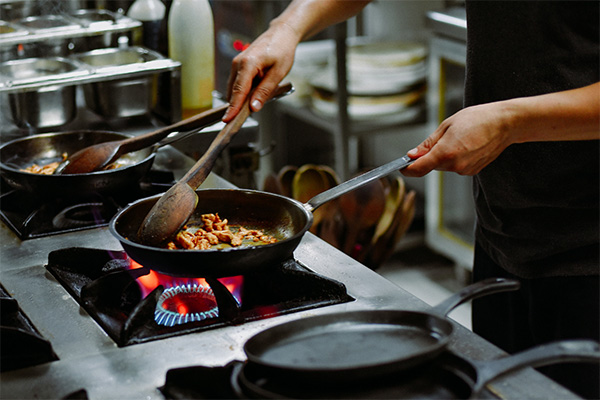
A frying pan, often called a skillet, stands apart from a saucepan in design and purpose. Frying pans feature a wide, flat bottom with gently sloping sides, allowing for efficient heat distribution and easy access to flipping or stirring ingredients. They come in various sizes, from small to large, catering to different cooking needs.
Frying pans typically sport a long handle on one side and are used without a glass lid. Their design is optimized for searing, browning, sautéing, shallow pan frying, and stir-frying tasks. The wide cooking surface and sloping sides make tossing and stirring a breeze.
Frying pans are also ideal for frittatas and omelets that require easy flipping. In contrast, saucepans have higher, straight sides and are better suited for simmering, boiling, sauce-making, reheating, and cooking grains or pasta.
